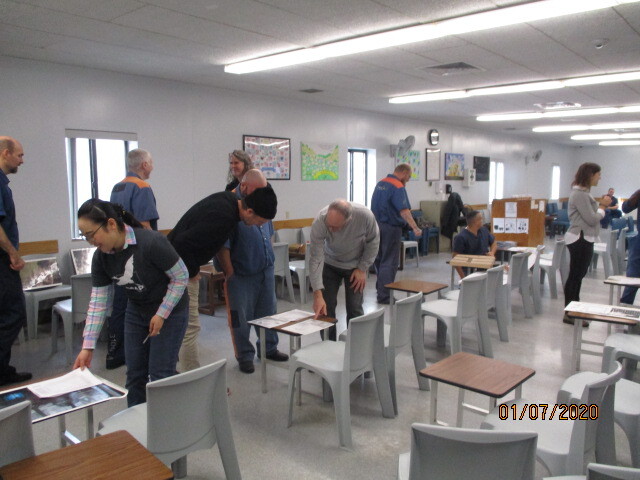About
The Annual Exhibitions of Art by Michigan Prisoners is a project of the Prison Creative Arts Project (PCAP) at the University of Michigan. The work of the Annual Exhibition is done by the PCAP staff, curators, students, community volunteers, and recently released artists. The planning for each exhibition begins in the late summer, when a letter goes out to all incarcerated artists who have previously participated, inviting them to submit work for the current year’s show. An announcement is also posted in each correctional facility to reach new artists. During the fall, our Arts Programming Coordinator plans a visit to each state prison in Michigan, coordinating with the Special Activities Director at each facility. The curator group coordinates their participation in the visits to be sure there are at least two curators at every facility. The visits occur between October and January. PCAP volunteers, students, and staff are also welcome to attend art selection visits; anywhere from three to ten people attend each trip.
The art selection visits are the center of this work. In classrooms, gymnasiums or chapels at each prison, PCAP curators and volunteers gather to talk with each artist individually and view their work. These are intense meetings, especially when curators have known the artist for many years. There is no time for superficial chatter--we must get to the heart of the matter as quickly as possible with each artist.
The art selection visit lasts for two to three hours depending on how many artists submit their work. There are three phases to each visit. First, the curators and volunteers spend time walking around the room, looking at the work and talking with artists. Artists are also able to walk around and see one another’s work. It is a special time as it is rare to have this kind of free-flowing exchange in prison. After about an hour, the artists move to a different space while the curators look together at each artist’s work and make selections for the exhibition. Because of the volume of work submitted each year, at most two pieces by each artist can be selected. In the final phase, artists are called one at time to have an individual conversation with one of the curators or volunteers. They receive feedback and have dialogue about their work and possible artistic paths for the coming year. The curators leave with the selected pieces. The artworks are taken to the PCAP studio on campus, photographed, logged, and prepared for exhibition. The show is installed in the gallery on the University of Michigan Ann Arbor campus in March, except of course, for the past year during the Covid-19 pandemic.
There is a wide range of art experience and skill level among the artists. We look for serious investment, a commitment to make something that matters whether it is by a beginner or an experienced artist. The work could be one of the first drawings by a beginning artist that has a great sense of form, or something else that distinguishes it as an authentic expression. It could be a highly skilled work that is the product of hours of labor or a beautiful quick sketch. We look for genuine expression from every level of experience. Our choices are made not only with the appearance of the exhibit in mind but also to encourage the growth of each artist.
The Annual Exhibition of Art by Michigan Prisoners is based on unconditional kindness toward the artists. While our criminal justice system focuses on the worst of each individual, we assume the best. We deliberately extend generosity, curiosity, validation and support to people living in prisons. Whether or not they “deserve” to be treated with kindness is irrelevant. We don’t ask why they are in prison; unless they want to tell us, we don’t want to know. We only want to relate to the part of them that strives for growth. We are eager to create a new context in which we meet artist-to-artist, curious about the work and how we can support them in their practice. With this validation, artists grow in confidence and ability, both in their work and in their lives. In turn, curators, staff, students, and volunteers are inspired by the artists’ dedication and ingenuity; by their constantly surprising imagery; and by their commitment to an inner liberty that exists despite the realities of prison life.

